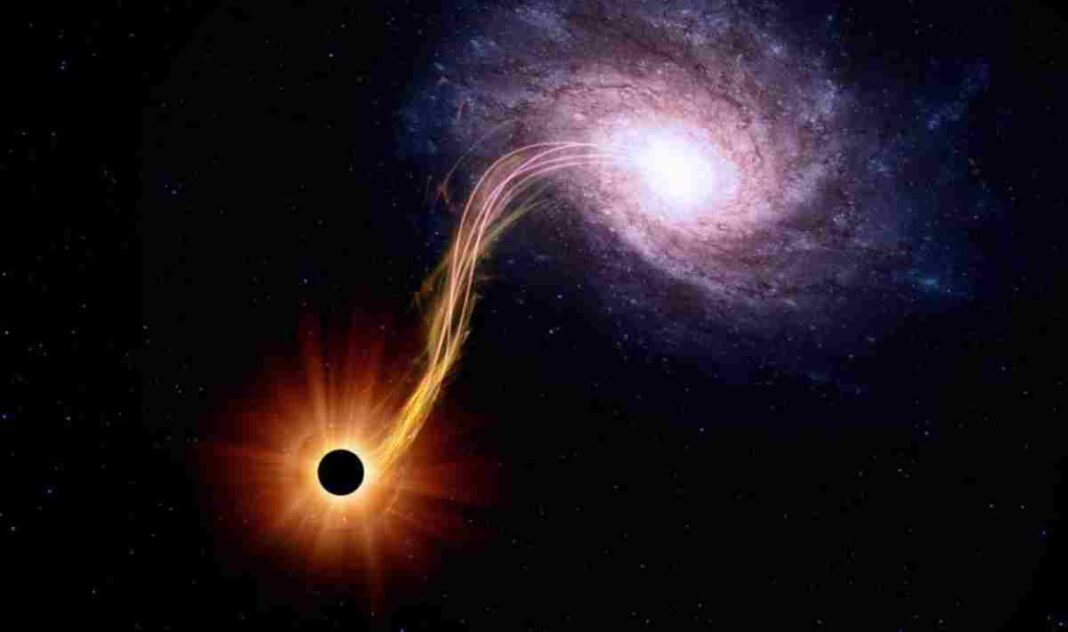UNITED STATES: Scientists detected a lengthy, mysterious object that has undergone a sudden and dramatic evolution and is located close to the supermassive black hole at the centre of the Milky Way galaxy.
Researchers led by astronomer Anna Ciurlo of the University of California, Los Angeles (ULCA) say that the mysterious object, called X7, has changed shape a lot and grown to be more than twice as long as it was before.
The change in the shape of the object shows that the strange blob is probably made of debris or a cloud of gas and dust that was made when two stars recently crashed into each other.
Milky Way’s black hole swallowing a mysterious object
Anna Ciurlo, who was the main author of the study, said that “no other object in this region has changed so much.”
“Some people thought that the object’s initial shape, which looked like a comet, might have been caused by stellar winds or particles shot out by black holes. Yet after 20 years of monitoring it, we found that it had grown longer. This cloud must have been pointed in the precise direction and orientation by a person.”
The investigation determined that X7 has a mass of around 50 Earths and is orbiting Sgr A* in an orbit that would take 170 years to complete.

But that might never occur. Based on its course, the team predicts that X7 will approach Sgr A* most closely around the year 2036, likely spiral inward towards Sgr A*, and ultimately vanish.
Mark Morris, a professor of physics and astronomy at UCLA and co-author of the paper, says that the galaxy’s black hole will create strong tidal forces that will eventually tear X7 apart before it even makes one full circle.
Astronomer Randy Campbell, the science operations lead at Hawaii’s Keck Observatory, is also one of the study’s co-authors.
When the gravitational pull of the supermassive black hole at the centre of the Milky Way influences this object, he said: “It’s thrilling to see dramatic changes in X7’s structure and behaviour in such fine detail over a relatively short timescale”.
“It’s an honor to have the opportunity to research the harsh environment at the galactic nucleus,” he added.
Only by utilising Keck’s exceptional capabilities and at the specific and respected Mauna Kea can the investigation be conducted with honour and respect for Mauna. Results from the entire study can be found in papers published in Astrophysical Journal.
Also Read: NASA’s Chandra X-ray Observes Black Holes That Are about to Collide



